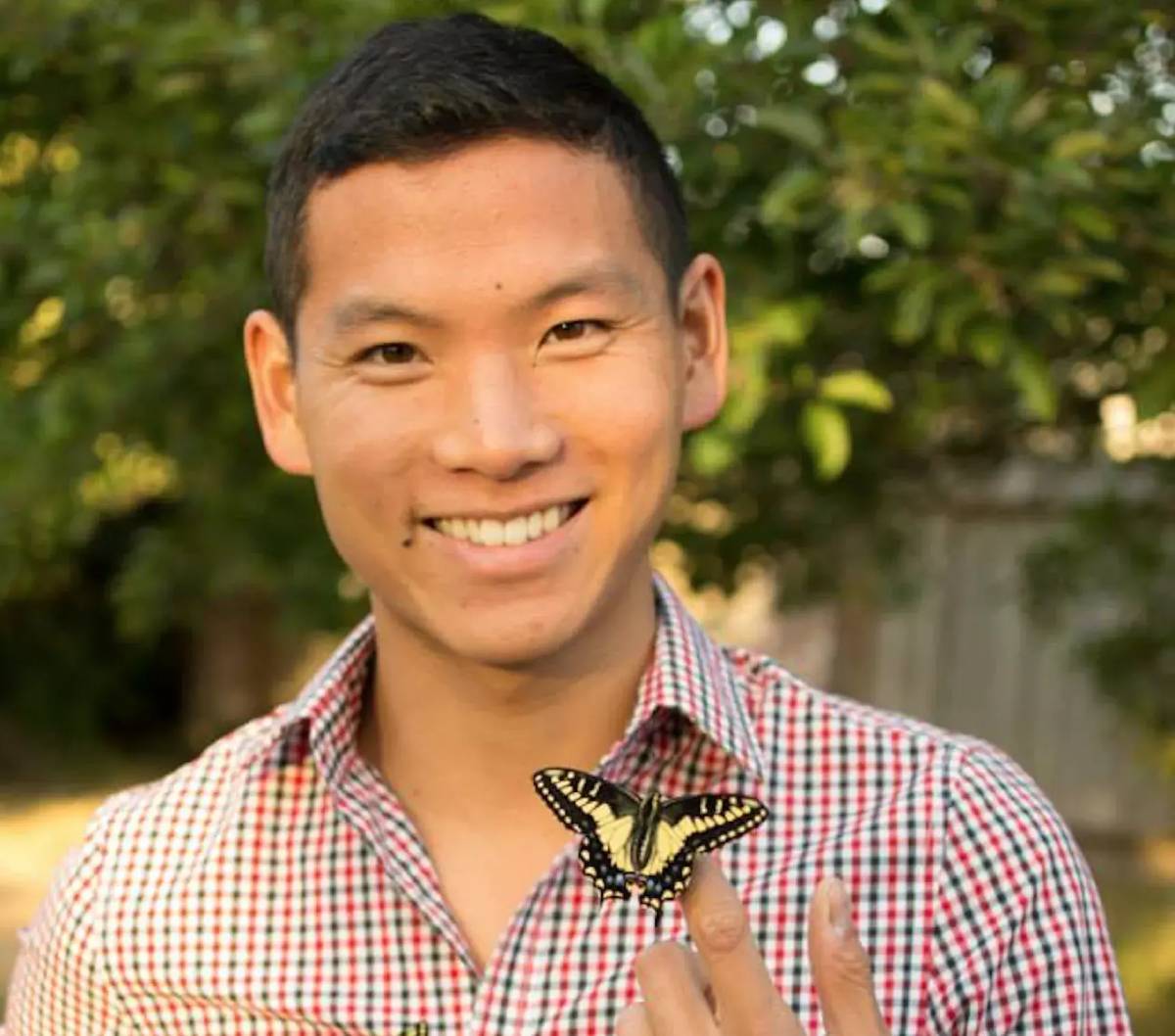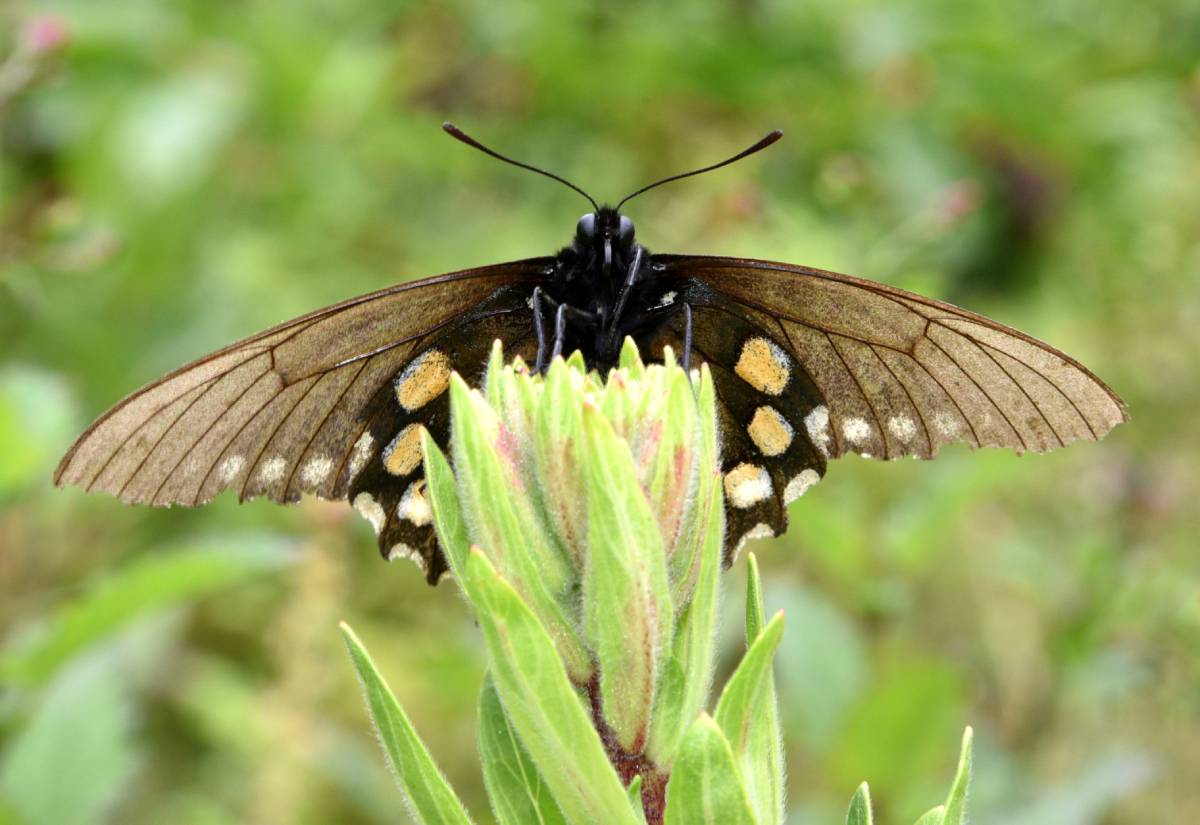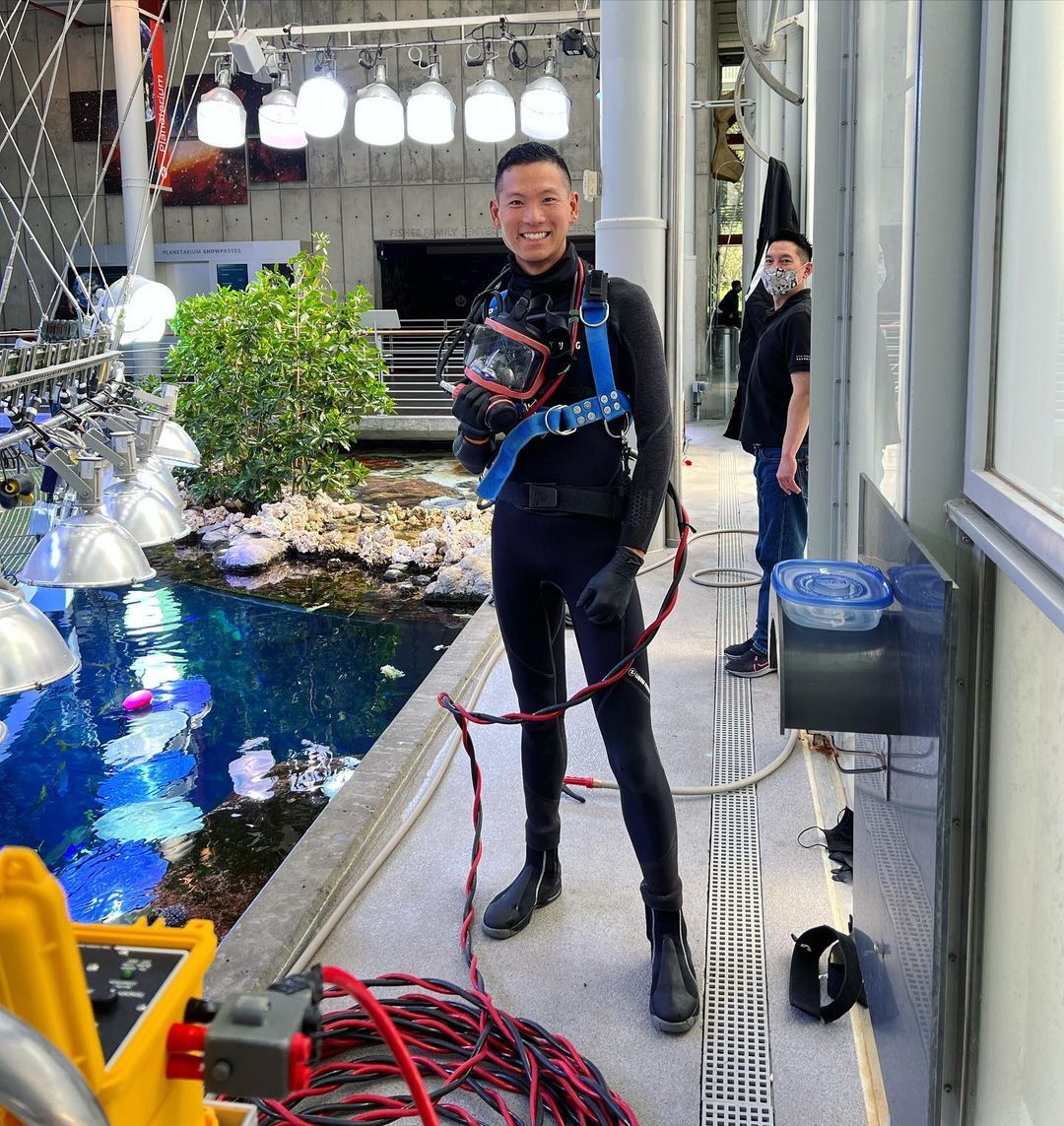Climate Hero: Tim Wong
- Nature Conservation
- Ecosystem Restoration
- Species Rewilding
- Biodiversity
- Community Action
- Climate Heroes
- Pollinators
- North Pacific
- Northern America Realm
Scrolling through Instagram, a hard stop and stare is made at @timtast1c’s fascinating account. Stunning pictures of beautifully colored butterflies fill the screen, often covering an entire hand or face. The man behind the ornately patterned wings is Tim Wong, a biologist who single-handedly repopulated the California pipevine swallowtail butterfly.

Image credit: Tim Wong
Meet the butterfly whisperer
An aquatic biologist at the California Academy of Sciences by day, Wong helps care for and study the science museum’s 38,000 species, including African penguins, Javanese stingrays, and a Philippine coral reef habitat. At night and in his spare time, he raises and conserves butterflies in a homemade butterfly sanctuary.
It all started when Wong was in elementary school, he told Vox. Raising painted lady butterflies in a class experiment, he was captivated by the process of metamorphosis from caterpillar to adult. From then on, he spent time in a meadow near his home catching, studying, and raising butterflies.
This work inspired him to receive a degree in environmental science at UC San Diego and volunteer at the Birch Aquarium at Scripps and the California Academy of Sciences. Wong was brought onto the team at the academy and today looks after more than a thousand tropical butterflies in its rainforest exhibit.

A decline in California pipevine swallowtail butterflies
The California pipevine swallowtail (Battus philenor hirsuta) or hairy pipevine swallowtail is a subspecies of the pipevine swallowtail that is only found in Northern California. It was a sight in the San Franciso area for centuries with its brilliant blue, black, and spotted orange wings.
However, due to human development and loss of habitat, the species rapidly declined. When Wong learned about the California pipevine swallowtail’s plight, he made it a personal mission to bring the species back.
Researching the butterfly, he found that when in caterpillar form, it only feeds on the California pipevine (Aristolochia californica) plant. These enormous black-and-orange-speckled caterpillars hatch from tiny red eggs and need the plant to cocoon properly before becoming beautiful blue butterflies.

Image credit: Tim Wong
Building a backyard butterfly garden
Finding the plant at the San Francisco Botanical Garden in Golden Gate Park, Wong was allowed to take home a few clippings. Then using self-taught techniques, he made a specialized enclosure that would protect the butterflies from predators and allow them to breed under natural sun and airflow conditions.
Wong brought in 20 caterpillars, and they began to feed on the California pipevine’s leaves. After about three to four weeks, the caterpillars started to pupate and form a chrysalis, or an outer shell. Inside, the insect liquifies itself, turning into a butterfly after two weeks to two years.

Image credit: Tim Wong
Self-made conservation success
From this initial group of 20, Wong’s backyard botanical garden is now home to thousands of caterpillars. Some through the organic laying of eggs and some through reintroduction, but the California pipevine swallowtail butterfly is back.
From his experience, Wong believes everyone can participate in conservation. While he recommends not everyone tries to bring back a species as it takes a unique understanding of each creature’s natural history and a lot of labor, anyone can plant native vegetation to help pollinators and the ecosystem.
Today, Wong continues to repopulate California pipevine swallowtails and spread awareness about various species through his social media. While Instagram has a knack for making the world feel overwhelming, its creators like Wong who make it a better place to browse and our shared planet a better place to be.
Interested in learning more about the species and conservation projects in Northern America? Use One Earth's interactive Navigator to explore bioregions around the world.
Launch Bioregion Navigator.jpeg?auto=compress%2Cformat&w=1440)


